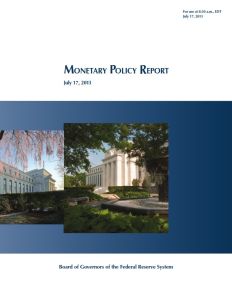Join getAbstract to access the summary!

Join getAbstract to access the summary!
Board of Governors of the Federal Reserve System
Monetary Policy Report
July 17, 2013
Federal Reserve Board, 2013
What's inside?
What’s new in the Federal Reserve’s official report to Congress for the first half of 2013?
Recommendation
In its regular semiannual report to the US Congress, the Federal Reserve’s Board of Governors restates its statutory mission of supporting employment, price stability and long-term interest rates. The report summarizes economic and financial progress over the previous two quarters and offers the governors’ outlook for the next few years. In this latest installment, the Fed finds the US economy to be improving – albeit slowly and with the constraint of the sequestration that began in 2013 . The Fed also indicates the conditions that will determine how much longer it will continue its accommodative monetary policy. getAbstract recommends this official recap of the US and global economies to those looking for timely information from the US central bank.
Summary
About the Author
The Board of Governors of the Federal Reserve is a central government agency that, along with 12 regional Federal Reserve Banks, forms the Federal Reserve System of the United States.


















Comment on this summary